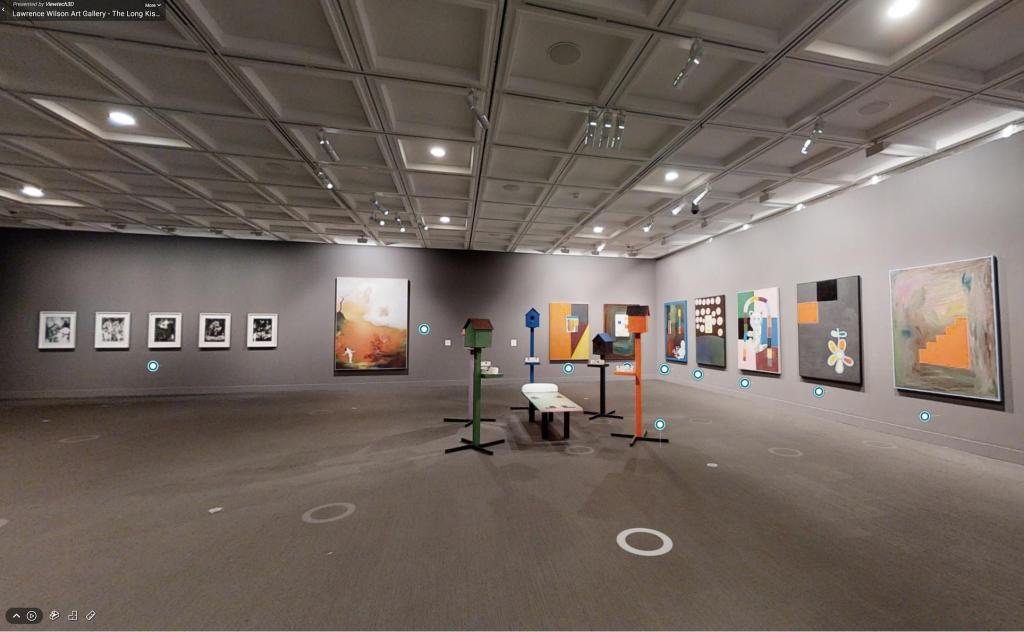The twenty-two members of the Australian University Art Museums Australia (UAMA) jointly deliver a comprehensive program of exhibitions, public programs, and events throughout each year. Showcasing the work of mostly Australian artists, they are significant contributors to the intellectual and cultural life of the nation.
Their unique role within centres of learning accords them a diverse audience, so when they close, the impact is dramatic and the speed of the recent coronavirus shutdowns has left a major gap in our cultural life. Filling that gap for this uniquely various audience is a significant challenge.
Behind closed doors, the staff at university art museums across the country have had to recalibrate their projects and reimagine how to provide their audiences with equivalent experiences that offer an authenticity not reliant on Walter Benjamin’s ‘aura’ – that intrinsic quality of artworks that cannot be communicated through mechanical means of reproduction.
The John Curtin Gallery [in Perth] has created their JCG@HOME, which brings together a wide range of materials to provide inspiration for their audience isolated at home. With already established digitisation strategies, several galleries can provide easy access to their collections, offering a richness and density of experience for researchers, general audiences, and students alike.
Yet, despite the opportunities for magnification and close-focused study, there is a sense of dislocation we feel when engaging with these decontextualised digital rectangles set within a pixilated screen.
Faced with social distancing constraints, all galleries are hoping to provide something more than a surrogate experience. ‘We can’t replicate the physical experience, and we don’t want to,’ explained Amit Sood from Google in 2015, ‘but let’s at least try and give people a sense of magic.’
Generating that sense of magic is the challenge. Some galleries, like QUT Art Museum and the Lawrence Wilson Art Gallery at the University of Western Australia (pictured top), have adopted high-resolution 360-degree camera formats that offer an approximation of standing at fixed points throughout the gallery to zoom in on individual works or installations.
While allowing a degree of independence, the fluidity and spatial orientation of a video walk-through are missing.
At the LWAG, we are therefore experimenting with ‘slow tv’ tours of current exhibitions, which situate viewers within the exhibition space to create a greater sense of ‘being present.’
However, anyone who has visited a gallery knows a great deal of enjoyment is the result of a cocktail of coffee, conversation, cake, inspiration, stimulation, and information. The plethora of public programs hosted each day across the country in university-based galleries is a source of education and intellectual stimulation for a broad and diverse audience.
With closure during COVID-19, UAMs have been trialling innovative approaches to presenting these programs. The UQ Art Museum has held Zoom symposia attracting audiences across the nation to hear speakers and participate in conversations around current topics as part of their We Need To Talk About… series. The Ian Potter’s Into your Collection and Up from the Vault series, and Flinders University Museum of Art’s Take 5 series are other excellent examples of audience engagement.
University art museums are also important contributors to the local arts ecology, and they work closely with artists to create opportunities for creative expression. One result of the closure of galleries across the country has been the erosion of opportunities for artists to earn a living and generate new works.
So, Monash University Museum of Art (MUMA) has suspended its regular fortnightly e-news and offered this digital space as a platform for artists to produce and share artwork and resources. At Griffith University Art Museum, a series of virtual studio tours have been curated within their Lockdown Studios series exploring how artists are managing their studios during this period of isolation, while RMIT Gallery’s New ab-Normal explores artists’ response to the isolation, anxiety, and lack of motivation caused by this unprecedented upheaval in their lives.
Through their website, the Academy Gallery at the University of Tasmania is also presenting an exhibition of video art in collaboration with the Breath of Fresh Air Film Festival.
The cornucopia of downloadable options now available through university art museums across the nation is a stimulating supplement to our creative consumption and a valuable contribution to available education resources. UTS Gallery is running a trial program of video conferencing STEAM Workshops based on Joyce Hinterding’s work Floric Antennae 1 for students in regional NSW; QUT Art Museum has developed a series of new kids’ activity sheets exploring William Robinson and his artworks for families to complete together at home. Indeed, many of the university galleries are offering a range of projects, workshops, and learning packages for children.
Once re-opened, crowds will no doubt flock back to imbibe the rich menu of exhibitions and public programming on offer nationally. However, in the short term, there is a lot to access remotely, much to enjoy, and a vast treasury of riches to unearth via a trip to the UAMA website.





